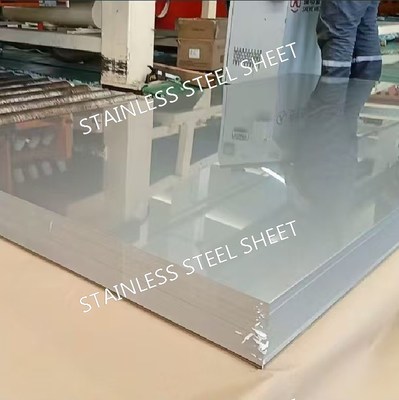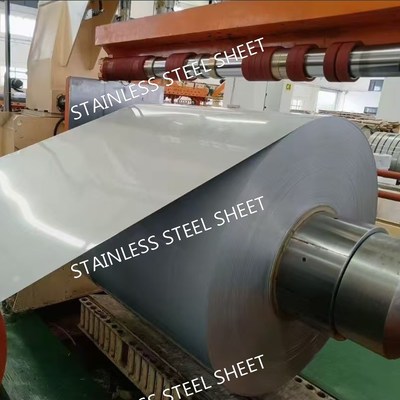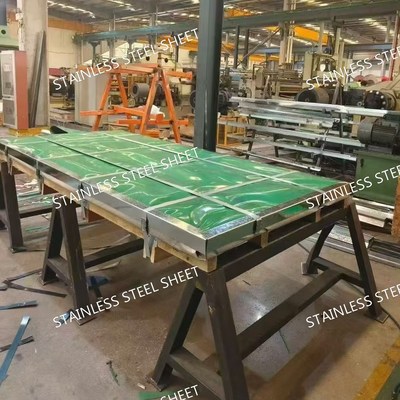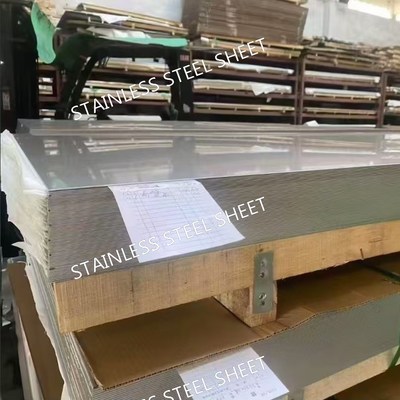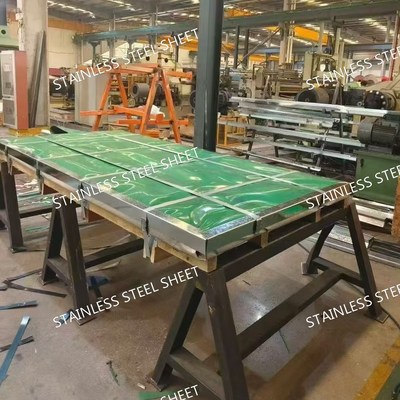-
Striscia di acciaio inossidabile
-
Strato di acciaio inossidabile
-
Piatto di acciaio inossidabile
-
tubo di acciaio inossidabile
-
Acciaio inossidabile Antivari
-
Bobina d'acciaio galvanizzata
-
Piatto d'acciaio
-
tondino d'acciaio
-
lega di nichel
-
Tubo d'acciaio senza cuciture
-
Fascio di acciaio inossidabile
-
Strato del piatto di rame
-
Tondino di rame
-
 Raian IonescuQualità materiale molto buona. abbiamo cooperare più di 10 anni. Vendono i generi dei lotti di materiale d'acciaio. Tutta la qualità materiale buona. Essi dovere per tutta la qualità materiale. Stiamo spianando per continuare a cooperare in futuro con loro
Raian IonescuQualità materiale molto buona. abbiamo cooperare più di 10 anni. Vendono i generi dei lotti di materiale d'acciaio. Tutta la qualità materiale buona. Essi dovere per tutta la qualità materiale. Stiamo spianando per continuare a cooperare in futuro con loro
Lamiera in acciaio inossidabile 254SMO resistente alla corrosione, piastra in lega ad alta resistenza
| Luogo di origine | Cina |
|---|---|
| Marca | BAOSTEEL TISCO |
| Certificazione | ISO |
| Numero di modello | 254SMO |
| Quantità di ordine minimo | 50 kg |
| Prezzo | 7 - 10 USD/Kg |
| Imballaggi particolari | imballaggio standard per l'esportazione |
| Tempi di consegna | 5 - 12 giorni in base alla quantità |
| Termini di pagamento | L/C, T/T, Western Union |
| Capacità di alimentazione | 20ton a settimana |

Contattimi gratis campioni e buoni.
Whatsapp:0086 18588475571
Wechat: 0086 18588475571
Skype: sales10@aixton.com
Se avete di preoccupazione, forniamo la guida in linea di 24 ore.
x| Prodotti | lamiere di acciaio inossidabile | Grado | 254SMO |
|---|---|---|---|
| Spessore | 1,0-80,0 mm | Tecnologia | laminato a freddo, laminato a caldo, forgiato |
| Larghezza | 1000mm 1219mm 1500mm o abitudini come richiesta | Superficie | 2B SEDERE No.1 |
| Standard | BACCANO DELL'EN DI ASTM GB JIS | MOQ | 1 tonnellata |
| Evidenziare | Strato di acciaio inossidabile 254SMO,piastra di acciaio inossidabile resistente alla corrosione,lamiere di acciaio legato ad alta resistenza |
||
Lamiera in acciaio inossidabile 254SMO resistente alla corrosione, piastra in lega ad alta resistenza
Specifiche della lamiera in acciaio inossidabile
| Nome | Lamiera in acciaio inossidabile 254SMO |
| Il nostro grado |
Serie 200: 201 202 Serie 300: 301 304,304L,304H,309S,310S,314,316L,316Ti,316H,316LN,317L,321,329,347 Serie 400: 409L,410,410S,416,420,430,431,436L.439,441,443,444,445,446 Acciaio inossidabile super: 904L,926,254SMO,654SMO,15-5PH,17-4PH,17-7PH.ecc Lega di nichel: C276, C22,G35,Lega X,Monel 400,K500,Inconel 600,601,617,625,718,Incoloy 800,800H,800HT,825.ecc |
| Tecnica | Laminato a caldo, laminato a freddo, forgiato |
| Standard | JIS, AISI, ASTM, DIN, TUV, BV, SUS, ecc. |
| Spessore | 0,1 – 80,0 mm |
| Gamma di larghezza | 10 mm – 2000 mm |
| Lunghezza | Personalizzato |
| Finitura | 2B, BA, No.4, 8k, Spazzolato, Hairline, Rivestimento PVD, Sabbiato |
| Servizio | Taglio laser, piegatura |
| Campione | Disponibile |
Lamiera in acciaio inossidabile 254SMO resistente alla corrosione, piastra in lega ad alta resistenza
Caratteristiche principali: resistenza alla corrosione ridefinita
Resistenza alla vaiolatura e alla corrosione interstiziale
Resistenza alla tensocorrosione (SCC)
Resistenza alla corrosione uniforme
Proprietà meccaniche: la resistenza incontra la tenacità
Metriche chiave delle prestazioni meccaniche
| Proprietà | Specifiche (ricotto in soluzione) |
|---|---|
| Resistenza alla trazione | ≥ 620 MPa (min); Tipico 650 MPa |
| Limite di snervamento (0,2% di offset) | ≥ 300 MPa (min); Tipico 320 MPa |
| Allungamento | ≥ 35% |
| Durezza Brinell (HB) | ≤ 270 |
| Densità | 8,0–8,1 g/cm³ |
| Punto di fusione | 1320°C |
| Intervallo di temperatura di esercizio | -50°C a 300°C |
Resistenza comparativa rispetto agli acciai inossidabili comuni
| Grado della lega | Resistenza alla trazione (MPa) | Limite di snervamento (MPa) | Valore PRE | Resistenza ai cloruri |
|---|---|---|---|---|
| 316L | 485–655 | ≥ 170 | ≈ 25 | Moderata |
| 2205 Duplex | 620–850 | ≥ 450 | ≈ 35 | Buona |
| 254SMO | ≥ 620 | ≥ 300 | ≥ 42 | Eccellente |
Composizione chimica: la scienza dietro le prestazioni
| Elemento | Intervallo di contenuto (percentuale in massa) |
|---|---|
| Carbonio (C) | ≤ 0,02% |
| Manganese (Mn) | ≤ 1,0% |
| Silicio (Si) | ≤ 0,8% |
| Cromo (Cr) | 19,5–20,5% |
| Nichel (Ni) | 17,5–18,5% |
| Molibdeno (Mo) | 6,0–6,5% |
| Azoto (N) | 0,18–0,22% |
| Fosforo (P) | ≤ 0,040% |
| Zolfo (S) | ≤ 0,030% |
| Cerio (Ce) | 0,03–0,08% |
| Ferro (Fe) | Equilibrio |
- Cromo e molibdeno formano uno strato di ossido denso e protettivo sulla superficie, impedendo agli agenti corrosivi di penetrare nel metallo di base.
- Il nichel stabilizza la microstruttura austenitica, migliorando la duttilità e la tenacità.
- L'azoto agisce come agente di rinforzo, aumentando la resistenza alla trazione e allo snervamento senza compromettere la duttilità.
- Il bassissimo contenuto di carbonio impedisce la formazione di carburi di cromo durante il trattamento termico o la saldatura, eliminando i rischi di corrosione intergranulare.
Specifiche e opzioni di personalizzazione
Specifiche standard
| Parametro | Intervallo |
|---|---|
| Spessore | 0,1 mm – 300 mm |
| Larghezza | 50 mm – 3500 mm |
| Lunghezza | 1 m – 12 m (lunghezze personalizzate disponibili) |
| Dimensioni standard (mm) | 1000×2000, 1220×2440, 1500×3000, 2000×4000 |
| Finiture superficiali | Laminato a caldo (HR) Decapato e ricotto (n. 1), Laminato a freddo (CR) 2B, 2D, Ricotto brillante (BA), Satinato, Lucido |
| Conformità agli standard | ASTM A240, ASME SA240, EN 1.4547, UNS S31254, GB/T 3280 |
| Certificazioni | Certificato di prova del mulino (MTC), rapporti sulle proprietà chimiche e meccaniche |
Capacità di personalizzazione
- Spessori non standard (0,15 mm – 300 mm) e dimensioni per adattarsi a specifici progetti di apparecchiature.
- Finiture superficiali speciali (ad esempio, lucidatura a specchio, spazzolatura) per esigenze estetiche o funzionali.
- Servizi di taglio su misura per ridurre al minimo gli sprechi e ridurre i tempi di lavorazione in loco.
- Supporto per saldatura e fabbricazione, inclusi materiali di consumo per saldatura a base di Ni consigliati (ad esempio, lega 625, ERNiCrMo-3) per mantenere la resistenza alla corrosione nei giunti saldati.
Applicazioni industriali: dove il 254SMO eccelle
Ingegneria marina e offshore
- Piattaforme offshore: piastre di coperta, sistemi di tubazioni e componenti strutturali esposti all'acqua di mare e agli spruzzi di sale.
- Costruzione navale: rivestimento dello scafo, serbatoi di zavorra e sistemi di raffreddamento ad acqua di mare.
- Apparecchiature sottomarine: collettori, connettori e riser che operano in ambienti ad alta pressione e ad alto contenuto di cloruri.
Impianti di desalinizzazione
- Sistemi a osmosi inversa (RO): recipienti a pressione, membrane e tubazioni che gestiscono salamoia concentrata.
- Sistemi di aspirazione e scarico dell'acqua di mare: componenti resistenti al biofouling e alla corrosione da cloruri.
Petrolchimica e trasformazione chimica
- Raffinerie: scambiatori di calore, condensatori e tubazioni per la lavorazione del petrolio grezzo e il recupero degli acidi.
- Reattori chimici: recipienti che gestiscono mezzi aggressivi come acido solforico, acido cloridrico e solventi clorurati.
- Desolforazione dei gas di scarico (FGD): condotti, scrubber ed eliminatori di nebbia esposti ai sottoprodotti corrosivi di SO₂.
Trasformazione alimentare e farmaceutica
- Apparecchiature per la lavorazione di alimenti acidi (ad esempio, pomodori, agrumi) e agenti detergenti corrosivi.
- Produzione farmaceutica: recipienti e tubazioni che richiedono elevata purezza e resistenza ai prodotti chimici di sterilizzazione.
Industria della pasta di legno e della carta
- Digestori, impianti di sbiancamento e caldaie di recupero che gestiscono sostanze chimiche corrosive (ad esempio, biossido di cloro, soda caustica).
Vantaggi rispetto alle leghe convenzionali
Resistenza alla corrosione superiore
- Supera 316L e 2205 in ambienti ricchi di cloruri, riducendo i costi di manutenzione e prolungando la durata.
- Elimina la necessità di costosi inibitori della corrosione o rivestimenti protettivi in molte applicazioni.
Convenienza
- Funziona come un'alternativa valida alle leghe a base di nichel (ad esempio, lega 625) e al titanio, offrendo prestazioni simili a un costo inferiore.
- Riduce i tempi di fermo e i costi di sostituzione grazie alla sua lunga durata e alla resistenza ai guasti prematuri.
Lavorabilità versatile
- Buona saldabilità con i materiali di consumo appropriati, che consente fabbricazioni complesse.
- Accettabili proprietà di lavorazione a freddo e a caldo, che consentono la piegatura, la formatura e la lavorazione (con utensili appropriati per la sua maggiore resistenza).
Prestazioni affidabili a tutte le temperature
- Mantiene la tenacità in condizioni criogeniche (-50°C) e la stabilità in applicazioni ad alta temperatura fino a 300°C.
- Resiste all'affaticamento termico nei sistemi con frequenti fluttuazioni di temperatura.
Linee guida per l'installazione e la manutenzione
Pratiche di saldatura
- Utilizzare materiali di consumo per saldatura a base di Ni (ad esempio, ERNiCrMo-3, lega 625) per abbinare la resistenza alla corrosione della lega.
- Eseguire il trattamento termico post-saldatura (ricottura di solubilizzazione a 1100°C seguita da tempra ad acqua) per ripristinare la microstruttura del materiale ed eliminare la sensibilizzazione indotta dalla saldatura.
Suggerimenti per la lavorazione
- Il 254SMO è più difficile da lavorare rispetto al 316L a causa della sua maggiore resistenza. Utilizzare utensili in acciaio super rapido (HSS) o al carburo con taglienti affilati.
- Applicare un'adeguata lubrificazione e velocità di taglio moderate per prevenire l'incrudimento.
Pulizia e manutenzione
- Rimuovere prontamente i contaminanti superficiali (oli, grassi, spruzzi di saldatura) utilizzando detergenti delicati o detergenti per acciaio inossidabile.
- Evitare il contatto con l'acciaio al carbonio durante lo stoccaggio o l'installazione, poiché ciò può causare corrosione galvanica.
- Ispezioni regolari (visive o con prove non distruttive) per rilevare precocemente eventuali segni di corrosione o danni meccanici.
Conclusione
![]()
![]()
![]()
![]()




